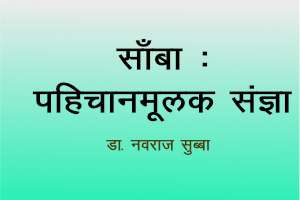Why Is Nepal Struggling to Grow?
Dr. Nawa Raj Subba
Understanding the Problems with Nepal’s Development
Nestled between China and India, Nepal lacks access to the ocean. There is a fascinating amount of history along with a wide variety of animal life in this area. Although Nepal possesses many resources, it struggles to keep up with the development of other countries. What’s happening here? The question is, what does stable growth mean?
This piece discusses the main things that are holding Nepal back from progress—from unstable politics to relying too much on foreign aid—and looks at what could be done in the future.
1. Unstable politics and bad government
1.1. Changes in government and policy all the time
Nepal has had over 30 changes of government in the past 30 years, which makes it difficult to make plans for the long run (Adhikari, 2021). In stable governments, policies stay the same from one administration to the next. But Nepal’s frequent leadership changes mean that infrastructure projects are left unfinished and economic policies aren’t always followed.
– Failed to build trust with foreign investors
1.2. Corruption and wasteful government work
Corruption continues to impede Nepal’s progress. (Transparency International, 2023) The Corruption Perceptions Index (2023) puts Nepal as the 110th most corrupt country out of 180. Some significant issues include bribery in public services.
- Project approvals are late.
- Bad use of money for growth
1.3. Bad local government
Despite the federation’s change in 2015, local governments still lack the resources and expertise to spur growth (Sharma, 2022). Many country towns have trouble with - Bad budget handling – not enough technical know-how
- Politics is obstructing progress in the neighbourhood.
Problems with the economy: unemployment and dependence
2.1. Dependence on Remittances Too Much
As the World Bank (2023) says, nearly 25% of Nepal’s GDP comes from money sent back home. Despite raising family incomes, this reliance on remittances poses long-term economic risks.
- Brain drain: skilled people leaving the country
- Ignoring local businesses; – Being open to changes in the world economy.
2.2. Not enough industrial growth
Asian Development Bank (2023) says that Nepal’s industry sector only makes up 5% of the country’s GDP. Some of the biggest problems are A lot of strikes and labor issues - Bad infrastructure (lack of roads and power)
- Businesses have a challenging time getting access to cash.
6.3% of young people are unemployed.
The International Labour Organization (2023) reports that while about 400,000 young people seek employment in Nepal annually, the country only creates 50,000 official jobs. Many young Nepalis have to deal with— - Underemployment (unofficial jobs that don’t pay much)
- Insufficient skill-based education leads many to seek work abroad.
3. Geography and Infrastructure
- Problems with geography and infrastructure
3.1. Being stuck on land and reliant on neighbors
Nepal’s trade with India and China is important, which means high transportation expenses.
- Political pressure on trade deals -Delays in importing and exporting because of problems at the borders
3.2. Poor Energy and Road Infrastructure—The Department of Roads reports that only 60% of roads are fixed. - Power outages often occur, even though hydropower is – Slow internet in rural places
3.3.2. Danger of Natural Disasters
Landslides, earthquakes, and storms often destroy buildings and force people to move, which costs millions of dollars to fix (National Planning Commission, 2022).
Problems with school and social life
4.1. Outdated School System
Nepal’s education system emphasizes memorization over critical thinking, which means that: – Graduates aren’t excellent at getting jobs; – Skills don’t match up with what employers need;
4.2. Inequality between men and women and social exclusion: Only 33% of women work (UN Women, 2023).
- Caste-based discrimination in Nepal continues to restrict opportunities and limit social and economic mobility for many individuals.
Problems with Getting Medical Care: – There aren’t enough hospitals and specialists in rural places; – There are high rates of death among mothers and children;
What is our role?
- What Should Be Done? Answers That Could Work
5.1. Making Government Stronger: – Constitutional changes that make politics less unstable; – Digital tools for government that make things more open and clear;
5.2. Improving Economic Independence: Support local businesses (like farming, tourism, and IT). – Make it easier for foreign investors to come in by making the rules better.
5.3. Improving Infrastructure: Build more roads and energy that work well; spend money on things that can withstand disasters;
5.4. Changes to education: Put more emphasis on vocational and skilled training; get people better at using technology for jobs they can do from home;
Conclusion
Nepal has a lot of promise, but problems with its systems, like political instability, economic dependence, bad infrastructure, and social inequality, are holding it back. Nepal could grow at its pace if it made smart changes to its government, schools, and roads.
The question still stands: Will the people and leaders of Nepal make brave moves toward change?
Nepal has a heart, a lot of history, and natural beauty that not many other places can match. Its people work hard, have hope, and are strong. Even so, the country still has problems that feel like old problems: political chaos, economic problems, bad infrastructure, and deep-seated inequality.
But it’s not impossible to address these issues. These things are signs that Nepal needs more than just policies and promises to move forward. It asks for brave leadership, action from the community, and a renewed faith in the country’s abilities.
Nepal can get stronger if we put money into our society. It can’t grow by copying what other people do; it can only grow by going its own way, gradually, with confidence, and with others.
The real question now is not whether Nepal can grow or not, but whether we all
References
Adhikari, P. (2021). Political instability and economic growth in Nepal. Kathmandu: Nepal Economic Forum.
Asian Development Bank. (2023). Nepal economic outlook. Retrieved from https://www.adb.org
International Labour Organization. (2023). Youth employment in Nepal. Retrieved from https://www.ilo.org
National Planning Commission. (2022). Post-disaster recovery assessment. Government of Nepal.
Transparency International. (2023). Corruption Perceptions Index 2023. Retrieved from https://www.transparency.org




